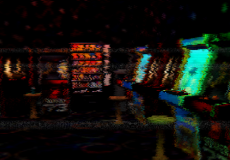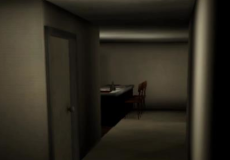
Titanic Simulator
Advertisement
Titanic Simulator places the player aboard a digital recreation of the RMS Titanic, allowing exploration of the ship and observation of how events unfold as the voyage progresses. The experience focuses on movement through detailed interior spaces, interaction with various objects and witnessing structural changes during different phases of the journey. The simulator offers a mixture of free exploration and guided sequences, encouraging the player to understand the layout of the vessel and the systems that shaped its operation.
Advertisement
Similiar games
Titanic Simulator places the player aboard a digital recreation of the RMS Titanic, allowing exploration of the ship and observation of how events unfold as the voyage progresses. The experience focuses on movement through detailed interior spaces, interaction with various objects and witnessing structural changes during different phases of the journey. The simulator offers a mixture of free exploration and guided sequences, encouraging the player to understand the layout of the vessel and the systems that shaped its operation.
Ship Layout and Exploration
Players can move through multiple decks, cabins, hallways and open areas, each designed to represent different functions of the ship. Navigation becomes an important aspect as the environment remains large and interconnected. Through exploration, the player gains insight into how the ship was arranged, including public spaces, engineering sections and living quarters. Certain areas may only become accessible after completing small tasks or reaching specific moments in the simulation, which adds structure to the experience.
Core Systems and Environmental Events
Titanic Simulator includes several systems that define progression and interaction throughout the voyage:
- free-roam navigation across multiple decks
- environmental changes based on historical timeline
- object interactions that reveal contextual information
- event sequences tied to structural impact
- dynamic lighting and sound adjustments as conditions shift
These features work together to simulate the ship’s journey while giving players opportunities to observe technical and environmental transitions.
Historical Context and Player Perspective
The simulator does not focus solely on movement; it also attempts to reflect the operational and social structure of the ship. By exploring different sections, the player can compare how passengers and crew members experienced the voyage. Some rooms present information about daily routines, while others highlight engineering functions such as boiler operations or communication systems. The unfolding timeline gradually introduces changes in atmosphere, signaling upcoming events that mark the later stages of the trip.
Titanic Simulator uses its environment to create a sense of progression as the ship transitions from departure to the final sequence of the voyage. The experience encourages players to explore, observe and understand how design, structure and conditions contributed to the ship’s fate. Because different parts of the vessel reveal unique details, the simulator rewards careful observation and revisiting earlier areas. Over time, players develop a clearer understanding of how the ship functioned as a complete system during its journey.
Discuss Titanic Simulator


















